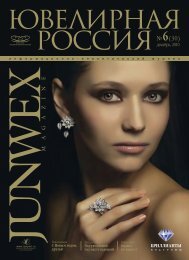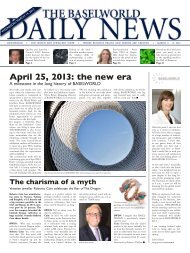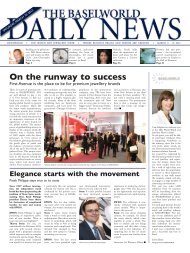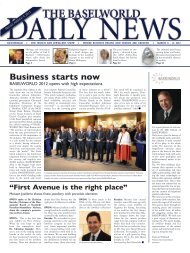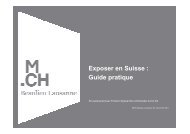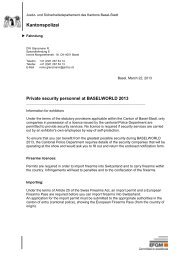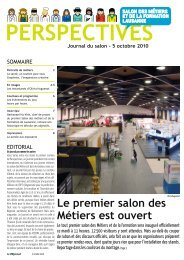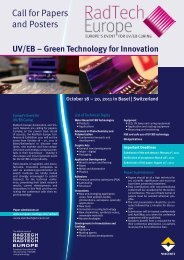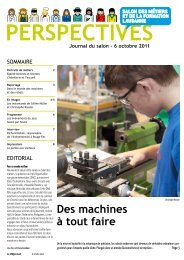WatchTime - August 2012
WatchTime - August 2012
WatchTime - August 2012
Create successful ePaper yourself
Turn your PDF publications into a flip-book with our unique Google optimized e-Paper software.
WATCHtalk<br />
Hoop<br />
Dreams<br />
How a child’s toy solved<br />
Montblanc’s millisecond<br />
challenge<br />
If three watches constitute a trend, then<br />
measuring milliseconds, or 1/1,000s of<br />
a second, is a trend. Two watch<br />
brands, each with high-speed horological<br />
histories, have launched mechanical<br />
chronographs claimed to be capable of<br />
accurately measuring 1/1,000s of a second.<br />
Last year, TAG Heuer debuted its<br />
Mikrotimer Flying 1000 Concept<br />
Chronograph, followed this year by the<br />
even faster Mikrogirder. At SIHH this<br />
year, Montblanc launched its own<br />
millisecond-measuring marvel, the<br />
TimeWriter II Chronograph Bi-<br />
Fréquence 1000, which employs a unique<br />
approach to splitting seconds.<br />
In a sense, development of Montblanc’s<br />
high-speed chronograph began in<br />
1916. That’s when Minerva launched its<br />
first 1/100s-of-a-second stopwatch. Acquired<br />
by Richemont in 2006, Minerva<br />
was a true manufacture, known for<br />
chronographs and pilots’ watches. In<br />
2007, Richemont decided that Minerva<br />
would produce movements for Montblanc,<br />
and the following year, Montblanc<br />
launched the “Fondation Minerva” to<br />
create the TimeWriter series, consisting of<br />
extraordinary timepieces developed with<br />
independent watchmakers. The first piece<br />
in the series – Metamorphosis – was<br />
launched in 2010. The newest piece, the<br />
Bi-Fréquence 1000, is the latest<br />
TimeWriter creation.<br />
20 <strong>WatchTime</strong> <strong>August</strong> <strong>2012</strong><br />
Because of Minerva’s long experience<br />
producing high-speed chronographs,<br />
Montblanc recognized that constructing<br />
a chronograph capable of measuring<br />
1/1,000s of a second over a useful interval<br />
presented four challenges:<br />
1. The movement must be precise, and<br />
simply increasing the frequency of the<br />
balance wheel would not work, because<br />
engaging the chronograph would cause a<br />
significant loss of amplitude, reducing<br />
precision.<br />
2. A gear train that advanced 1,000 times<br />
per second would be subjected to wear<br />
The movement is a<br />
clean-sheet-of-paper<br />
design.<br />
and tear that would reduce the movement’s<br />
longevity.<br />
3. The chronograph indications must be<br />
legible. Measuring to the nearest<br />
1/1,000s of a second means nothing if the<br />
elapsed time to the third decimal cannot<br />
be easily read.<br />
4. The chronograph must be useable in<br />
the real world, meaning it must be able to<br />
measure intervals longer than just a few<br />
minutes.<br />
To meet these challenges, Montblanc<br />
teamed up with independent watchmaker<br />
Bartomeu Gomila, who had an ingenious



